“…the self comprises infinitely more than a mere ego, as the symbolism has shown from of old. It is as much one’s self, and all other selves, as the ego. Individuation does not shut one out from the world, but gathers the world to oneself.”
~Carl Jung, The Structure and Dynamics of the Psyche, Paragraph 432.
Individuation was Jung’s word for the process of coming to know and accept our whole selves as we truly are. As I’ve noted before, this includes not only who we think we are, (Ego), or what we show the world (Persona), but also our Shadow (disowned unconscious contents), Animus (unconscious masculine sides), Anima (unconscious feminine sides), and Self (our God-image, the archetype of wholeness).
To our surprise, opening to our inner otherness reveals a world that is exactly like the one without! Not only is it a compilation of our worst fears and flaws, but also of our fundamental beauty, lovable qualities, and sacred potential. Accepting ourselves at our worst humbles and softens us. Accepting ourselves at our best affirms and inspires us.
If we keep at it, bringing our inner opposites into our awareness becomes a catalyst for the miracle of transformation. Resistance, separation and defensiveness soften into an all-embracing inclusivity. Suspicion dissolves into trust, agitation calms to equanimity, hostility is replaced by compassion, and mindless worry wanes into mindful serenity. This inner alchemical process gradually alters our behavior too, although it can take years before old dysfunctional habits and attitudes are so thoroughly mitigated that other people can see and trust the mounting evidence.
Gathering the inner world to ourselves also changes our ideas about the Mystery of God. For example, the Old Testament Yahweh first appeared in the Western world as a jealous, partisan and judgmental deity. Then 2,000 years ago a new God-image of love, mercy, justice and inclusiveness was introduced and began to make its way into collective thinking. But despite widespread acceptance of this God-image, the translation of ideas into action has been a dishearteningly slow process.
Christianity was founded on the basic principles of democracy, but the U.S. didn’t establish a democratic government until 1,776 years later! Slaves were freed in the U.S. in 1863, but it took another three generations before the exclusive doctrine of “separate but equal” was overturned. Jesus constantly demonstrated his belief in the equality of women, but American women weren’t even allowed to vote until 95 years ago and women are still denied certain basic rights throughout the world.
Despite our advances, it is commonplace for people who profess to believe in a God of love and inclusiveness to consistently demonstrate the opposite values without realizing it. This has always been true of even the most well-intentioned people. Jungian analyst James Hollis explains why:
“…the unexamined adult personality is an assemblage of attitudes, behaviors and psychic reflexes occasioned by the traumata of childhood, whose primary purpose is the management of the level of distress experienced by the organic memory of childhood we carry within. . . . What we may call the provisional personality is a series of strategies chosen by the fragile child to manage existential angst. Those behaviors and attitudes are typically assembled before age five and are elaborated in an astonishing range of strategic variations with a common motive – self-protection.”
The unexamined adult personality is the reason for the disconnect between belief and behavior. After thousands of years of struggling to do the right thing and consistently failing, we are just beginning to realize that there is no magic pill, no silver bullet, no quick fix. The only remedy for our painful separations is to cross the line that fear drew in the sand of our childhood and begin gathering our inner world to ourselves. Then each of us will discover that it is overcoming our ignorance, not our sin, which connects us with the Ground of our Being and ushers us into the presence of the sacred eternal Mystery.
Special thanks to Lewis Lafontaine and Robert Longpre’ for posting the inspiring quotes.
Healing the Sacred Divide can be found at Amazon and Larson Publications, Inc.
Ebook versions of The Bridge to Wholeness and Dream Theatres of the Soul are at Kobo, Barnes and Noble, Smashwords, and Diesel Ebooks
Image credit: google free images







16 Responses
” it is overcoming our ignorance, not our sin, which connects us with the Ground of our Being and ushers us into the presence of the sacred eternal Mystery.” Beautiful, Jean!
Many thanks, Russ!
I believe it’s fear of the unknown that keeps the unexamined adult personality unexamined and clinging to a simpler yesterday that never really existed. You’ve got a lot of great information squeezed in this article. I enjoyed it very much. Lorlinda
Yes, I agree. I’m glad you liked this article! Thanks for letting me know. Jeanie
… Wonderful reflections Jean, thank you … with the best ‘will’ and intent we seem to inevitably neglet the soul piece of the Divide … you help us remember our centre … Blessings, Andi.
Thank you, Andi. Yes, that’s a good way to put it: the soul is easily shadowed by the ego’s bright ambitions, much to our—and the world’s—detriment. Blessings to you too. Jeanie
Inspirational text for my morning coffee, thanks!
My pleasure!
WOW! This came to me at the perfect time! I have been doing inner child work for the last few weeks and now realize that it is the miracle that has deeply healed me. Thank you for your timely post, Divinely inspired and read at the perfect moment for me1
I love it when that happens! Thanks so much for letting me know!
Fran, you might be interested in this post I wrote for elephant journal about the transforming power of dreams. http://www.elephantjournal.com/2013/10/going-against-the-current-dreamwork-as-spiritual-practice-jean-raffa/ If you haven’t been working with your dreams I highly recommend it! They’ll show you your inner child in a big way! For many years mine appeared as a ragamuffin orphan who kept annoying me by wanting my attention. When I started to take the previously disowned feelings she represented seriously in my waking life, she stopped haunting my dreams!
I want to quote the same last sentence Russ quoted: “It is overcoming our ignorance, not our sin, which connects us with the Ground of our Being and ushers us into the presence of the sacred eternal Mystery.” Such powerful and true words.. I hope a loving Goddess image comes to universal consciousness before we destroy ourselves with Yahweh’s wrath. As you say, the process is dishearteningly slow. Thank you, Jeanie. Your posts always help me see from a new angle.
Thank you, Elaine. I’m very glad to know my posts give you new ways to see the human condition. This “sin” doctrine, especially the idea of “original sin, ” has been bothersome to me for a very long time. I think it’s time we got past it. It only creates more guilt than we already have just for being incomplete as a species. I imagine this kind of shaming was thought to be helpful at some point in our religious history….maybe it was believed that a good dose of it would temper the ego. But as far as I can see it didn’t work. It’s patently obvious that it has no healing potential. I agree that it’s time we started focusing on Mother love, the kind that understands and accepts us as we are instead of punishing us for being human!!
I need to add to my comment, a powerful Goddess image, not just a loving one. After studying Greek goddesses, Inanna, Baba Yaga, and Egyptian goddesses (our group has studied together for 25 years), we’re transitioning from Isis to Mary. Isis worship and festivals were prohibited during the 5th Century in the Roman Empire at the same time Mary was elevated by the Church to her “sinless” virginal state. We use Anne Baring and Jules Cashford’s The Myth of the Goddess as a text and other resources. Baring explores the virginal state, the sin of Eve and the despised Lilith, and the immaculate purity of Mary. We see how the essential powers found in Isis and many other goddesses were stripped to an adolescent virginal obedient innocence. Yes, some Christian cultures kept the powerful image of the Goddess through the Black Madonna, but not my northern European Lutheran ancestors. Mary only appeared on Christmas Eve in pastel blue and white with her Divine Child–and then she was gone for another year. Your book grapples with the repercussions of this massive cultural shift that took place during the Bronze age when we moved from Agricultural Deities to Warrior Gods–and this blog touches on that issue for me. The cultural history of the Goddess helps me understand why, to quote Marion Woodman, I’m addicted to perfection.
I agree completely, Elaine. As you know, empowering the feminine is a major theme of all three of my books. And although Mary was never held up to me as the appropriate model for girls, my family and I were programmed by the traditional beliefs of Christianity to see women as less powerful, less entitled, less equal, less everything, really, than men in a million subtle ways. As a result I too became addicted to perfection and still struggle with that.
Discovering Jungian psychology and learning that everyone has a shadow was a huge breakthrough for me; not just because it taught me to be comfortable with my imperfections, but because it also helped me see that the males I admired were also imperfect and had shadows of their own that needed to be addressed. This sounds so naïve to me now when everyone knows that men aren’t perfect either :-), but in those days I was, like my society, caught in an unconscious projection of my authority onto males and a male God, and was in serious need of a reality check!! Luckily, Jungian psychology has furnished me with that!
Reblogged this on BABAJI.